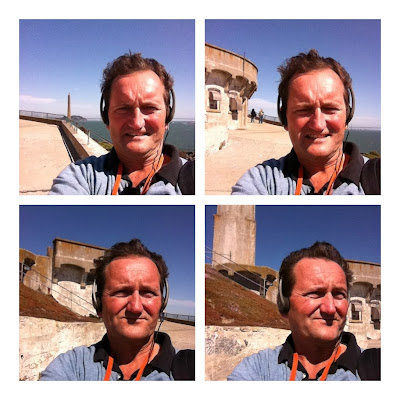Fig.1. Listening to a memorable and evocative 'visitor audio tour' on Alcatraz. Away from the bussle of people, by a nature reserve for nesting ganets.
1) Theme and Format. Presentation of a multimedia model, QStream, for use before, during and after a trip that might be to a museum, historic property or battlefield.
2) With the centenary of the First World War upon us I would like to find ways to enhance the visitor experience, perhaps for those with a GCSE or A’Level, or an undergraduate interest rather than for the general public. Ideally there would be options to select a level of interest and previous understanding.
3) For this audience Secondary or Tertiary audiences will be of most interest. Perhaps even promoting an MA course for graduate Historians?
4) I have had an interest in QStream for a couple of years and developed a proposal for its use with patients with chronic illness. This is an alternative, though equally valid use for the platform. My only variation on this would be to include an audio component, and/or to track visitors so that content might be tailor to and for them.
5) How an App that spaces learning over a period of weeks and months can support the experience of visiting a museum, historic property or battlefield.
How an App is able to create a personalised experience for a visitor to a museum, historic property or battlefield that enhances the learning experience without ditracting from the artefacts or the place itself, in other words, in compliments and augments the experience created by the visitor on their trip.
6) Already familiar with QStream (aka Spaced-Ed) I checked on latest papers and developments. I searched ‘museum’, ‘augmented’ and ‘elearning’ and from a selection of around 12 papers have thus far read, in depth, two of these as well as a couple of commercial conference presentations of a museum platform. Based on this the idea is shifting towards headphones tracked in a space feeding a bespoke sound landscape and commentary based on where a person is and their observed and apparent behaviour. One platform avoided the need for any input by the user, though for my purposes GCSE (Key Stage X), A’leve (Key Stage Y) or Undergraduate, even Graduate is considered necessary so that you compliment the person’s necessary learning experience.
7) My literature research approach can always be refined, having completed H809 Research-based practices in online learning I feel compotent to conduct a thorough search.
8) One gltich was to in error delete a folder in RefWorks rather than create a bibliography. There was no back button to undo. I make look at purchasing a commercial referencing tool such as EndNote. Having always felt that online learning was a process I felt the need to have a subject specialism too, for this reason I am taking a Masters degree in British First World War studies with the University of Birmingham. This is a very different experience. A monthly day of lectures/tutorial, a reading list with books to find from a regional university library, and an online platform that makes the OU VLE look like Whisley to Bham’s assorted allotments under the railway bridge! But you do get to meet fellow students and librarians.
9) Audio, without visuals, felse like harcking back to audioguides of the 1980s and 1990s, yet today, with GPS and other sophisticated tracking devices a visitor experience can be situated, to the spot, personalised to the individual, and still be evocative through ‘paininting pictures’ in the mind without ditracting from artefacts museum curators have so carefully chosen. A recent experience visiting Alcatraz, for all its Disneyfication and complimentary wildlife sanctuary cum Native American protest camp, included what I would describe as a BBC Radio 4 docudrama that was intelligent, moving an engaging - a blend of officer, prisoner and officer family oral memoir and soundscape. However, it did rely on the visitor being in the right spot when the audio was played so that very quickly, taking my own route around the island, I found the content in my head at odds, in an interesting way, with what I was looking at: ganets nesting on an old basketball yard (making it akin to a visit to the Farnes Islands or the Bass Rock, also an old prison) while in the distance mulitmillion dollar multi-hull yachts raced the America’s cup.
On Reflection
The experience of Alcatraz would be extended if I had this audio-tour still to listen to repeatedly, to read as a transcript and then to find links for my own research. Having circumvented the regular tour I nearly found myself embarking with the headphones still plugged in ... I'm like the characters in 'Jurassic Park', I soon tire of someone else's plot and create my own journey. It gave new meaning to the 'birdman' of Alcatraz, for example. And I can see why Clint Eastwood would never have made it to land ... you'd be washed out into the Pacific.

